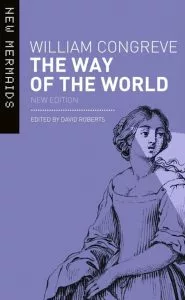Toni Morrison’s ‘Beloved’: A Critical Analysis of “Slavery” Post-American Civil War
set against the Post-American Civil War, Toni Morrison’s ‘Beloved’ is a neo-slave narrative that chronicles the poignant fictitious story of Sethe, an ex-slave, and the aftermaths of her maternal decision to kill her eldest daughter called ‘Beloved’ for protecting her from the dehumanizing and destructive impacts of the institutionalized ‘Slavery.’ Utilizing her analytical spectrum in Beloved, Morrison sensitively attempts to shed light on the multiple forms of physical, mental and sexual afflictions inflicted on slaves and their inability to separate themselves from their horrible past terrors in their present life.
Through this article, I wish to interpret Toni Morrison’s ‘Beloved’ as a Neo-Slave Narrative by focussing on the psychological impacts of Slavery on the ex-slaves post-American Civil War and also, at the White oppressors.
The timeline of 1760 to 1770s in the United States of America witnessed the emergence of “American Slave Narratives” that captured the intensity of barbarity intrinsic in the social institution of Slavery. Although these narratives were more often authored by Americans but on a magnified scale, these were the historical documents recording the mental and psychological conditions of people crippled in the chaotic African-American slavery system. According to James Williams slave narrative-“ Slavery is a volcano, the fires of which cannot be quenched, not its ravishes controlled.1.” As anyone deeply analyses the mental state of slaves, he/she will look into the dearth of empathy and compassion in the hearts of the slaveholders who separated their slaves from their families, objectified them, brutally maltreated them, and raped them, if they were women. Under such social disturbances, these slave narratives sharpened their political focus and gained the support of masses and the leaders like William Lloyd Garrison, Frederick Douglass, etc in the growing “Abolition Movement.” As a consequence of consistent pressure on the US Government, the Constitution was corrected in 1865 to include the Thirteenth Amendment, which officially abolished slavery in the United States of America.
Post-World War II, the contemporary scholar’s composed neo-slave narratives that offered newer interpretations to racialized slave narratives of the Atlantic World and grappled with the brutality of transatlantic slavery’s history, cultural memory, representation, resistance, identity, race, gender, sexuality, and subjectivity. According to Bernard W. Bell, the “Neo-slave narratives” are “residually oral, modern narratives of escape from bondage to freedom.2.” The neo-slave narrative renders a retrospect to the past and consequently, the inability of ex-slaves to separate themselves from memories in the present is the major thematic concern of the neo-slave narratives. Not only in neo-slave narratives, but the trauma of the destruction of self-identity persists in every slave account, for instance- Frederick Douglass expresses his feeling of self-alienation as “ I was broken in body, soul, and spirit. 3. ” Psychologically, Slavery doesn’t only exploit the slaves but also the white masters who in turn become blatantly apathetic, insensitive and sadistic as noticeable in Solomon Northup slave narrative where the white mistress look at the excruciating wound of his slave with “an air of heartless satisfaction 4.” Putting my magnified attention on these psychological impacts of slavery on the ex-slaves and white oppressors, I wish to analyze highlighting Toni Morrison’s ‘Beloved’ as a Slave Narrative.
Like every slave narrative, Toni Morrison’s ‘Beloved’ consists of countless accounts of physical and sexual treachery committed on slaves’ bodies. Institutionalized Slavery had reduced the slaves to a level of sub-human in the hierarchy and they were treated as “Commodities” that are meant to be sold and purchased. In case, the slaves happen to be a woman, the levels of afflictions multiply as could be observed in John Rankin’s Letters on American Slavery to Mr. Thomas Rankin in 1833 where he analyses- “The Slaveholder has it in his power, to violate the chastity of his slaves. Hence, it happens that, in some families, it is difficult to distinguish the free children from the slaves. It is sometimes the case that, the largest part of the master’s children are born, not from his wife but of the wives and daughters of his slaves, whom he basely prostituted as well as enslaved. 5.” Particularly in Toni Morrison’s ‘Beloved’, Setha suffered the worst forms of slavery, under which she was whipped, beaten, raped continuously and at one time, her breast milk was stolen by her oppressor’s nephew but the harshest of all was her maternal act to commit infanticide for shielding her child from the destructive impacts of slavery. Other important characters are also the victims of dehumanizing impacts of slavery, for example- Paul D was objectified, beaten, and treated like animals in Sweet Home when he tried to unshackle himself and run out, Sixo was whipped by the schoolteacher for demonstrating that, “definition belong to definers, not to the defined, 6.” and Stamp Paid was mentally tortured by the slave owners who repeatedly raped his wife. Though these characters physically liberated themselves from the inhumane system of Slavery post-American Civil War, they were psychologically unable to free themselves from these terrible memories. The visible marks of the degradation on their bodies (like the scars and whipping marks on Setha’s back, the roasting body of Sixo, the hot of Paul D’s mouth) remind them of their past and they suffer incessant pain in present.
Utilizing her rational spectrum in Beloved, Morrison sensitively attempts to shed light on the multiple forms of physical, mental, and sexual afflictions inflicted on slaves and their inability to separate themselves from their atrocious past terrors in their present life of freedom post-American Civil War. Though the characters are struggling with their inner selves even the slight remembrance of the past triggers them in present and these depths of intimidation have created a sense of self-alienation and degradation/loss of their real-self-identities. For instance-
I) Setha elucidation to Beloved about her maternal decision to kill her eldest daughter through the words-“ That anybody white could take your whole self for anything that comes to mind. Not just work, kill or maim you but dirty you. Dirty you so bad you couldn’t like yourself anymore 7.” voiced the degradation of not only her individuality but of all slaves.
II) In Chapter-7, Morrison writes- “Saying more might push them both to a place they couldn’t them get back from. He would keep the rest where it belonged, in that tobacco tin buried in his chest where a red heart used to be. Its lid rusted shut. 8” In these lines, Morrison recounted Paul D’s struggle to suppress his memory in his imagined tobacco tin (that is corroding him intrinsically every second and minute.)to prevent Setha and him to reach the psychological zone where they could re-confront their past and its atrocities.
Both the former slaves Setha and Paul D are striving hard in their present for escaping from their past personal history and both had developed their mental systems in a way to forget it but none of them succeeded fully in wiping it out, after all,l it’s one of the parts of life. While Setha could be able to erase more or less, Paul D is completely unable to do so and now it is internally corroding him and psychologically weakening him. The rusted tobacco tin thus manifests the feeling of self-alienation that is buried in his heartless, spirit-deficit body. While some slaves could retrieve some sense of their present selves, there are also brief descriptions of ex-slaves like Jackson Till, Aunt Phyllis, and Halle who lost their complete self-identity and went insane due to intense psychological misbalance and mental trauma.
Psychologically, Slavery doesn’t only influence the slaves but also the white masters who in turn become blatantly apathetic, insensitive, and sadistic. Morrison voiced this dehumanizing impact of Slavery on the oppressive White Americans through Stamp Paid speech- “White People believed that whatever the manner, under every dark skin was a jungle. Swift unnavigable waters, swinging screaming baboons, sleeping snakes, red gums ready for their sweet white blood. In a way, they were right… But it wasn’t the jungle blacks brought with them to place… It was jungle white folks planted with them. And it grew. It spread… Until it invaded the whites who had made it… Made them bloody, silly, worse than even they wanted to be.” Through this long monologue, Stamp Paid reflected how Slavery corrupts every individual who comes in contact with this system irrespective of their skin color and social status. The school teacher who inflicted continual pains on Setha, Paul D, and others was himself psychologically disturbed, dehumanized, and destroyed in many ways. Also, Paid depicted the jungle as an incredible, adventurous and thrilling place from the white’s standpoint but realistically, he discerned anxiety on the parts of white about the inadvertent happenings represented through sleeping snakes and red gums ready for white blood. Through the movement of jungle image, Morrison evaluated how the barbarity propelled by American slaveholders on their slaves has a hollowing impact on their own mental and psychological state.
One of the most violent expressions in the slave narratives, according to James Olney is “the account of a slave auction, of families being separated, and destroyed of distraught mothers clinging to their children as they are torn from them, of slave coffles being driven south 9.” Toni Morrison’s ‘Beloved’ captures the brutal incidents of atrocities inflicted on families or the familial decisions taken to protect themselves from monstrous Slavery, as underlined below:
I) Setha’s maternal decision to kill her eldest daughter rather than turning her child into the desperate victim of Slavery is one of her fierce expressions against Slavery. She says- “ I wouldn’t draw breathe without my children.” Understanding the psychological state of mothers who are incapable of protecting their children, Setha opts for the second option of killing her daughter rather than living in revulsion and disgust.
II) Baby Bugg’s grief and loss at the enslavement of her eight children hollowed her intrinsically where four of her children are auctioned and the other four ran away. These instances indicate the afflictions endured by families in the African-American slavery system.
Based on the above analysis, it could be concluded that Beloved is a neo-slave narrative that reconstructs the personal history of each ex-slave and recollects the psychological and mental trauma associated with these memories. Morrison’s attempt to capture the poignantly real story of Margret Garner is though invented by her but it is mostly inspired from the other true slave narratives and therefore chronicles a true representation of atrocities inflicted on slaves and their families. Not only this but, it also metaphorically depicts how Slavery psychologically also corrupts the oppressors even though they had created it.
REFERENCES:
1 William, James (1838), Narrative of James William, an American slave who was a driver on the cotton plantation in Alabama.
2 Bell, Bernard W, The Afro-American Novel, and its Traditions, Amherst University of Massachusetts, Press, 1987
3 Douglass, Frederick, Narrative of Life of Frederick Douglass, an American Slave, ed. Deborah E. McDowell, Oxford, and New York
4 Solomon Northup Slave Narrative
5 Rankin, John (1833), Letters on American Slavery addressed to Mr. Thomas Rankin, merchant of Middlebrook
6,7,8 Morrison, Toni, Beloved, Beijing: Foreign Language Teaching and Research Press
9 Olney, James (1984), ‘I Was Born’: Slave Narratives Their Status as Autobiography and As Literature






